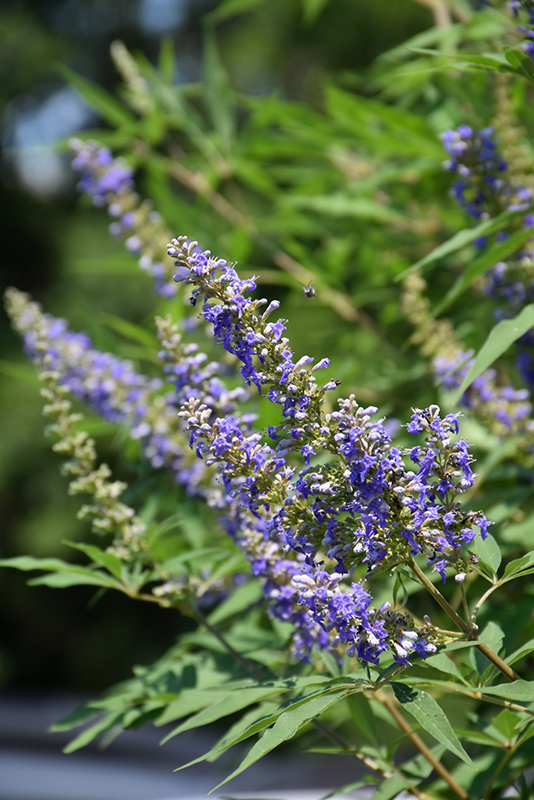>> Home
Blue Diddley® Chaste Tree
Vitex agnus-castus 'SMVACBD'
Height: 5 feet
Spread: 5 feet
Sunlight:
![]()
![]()
Hardiness Zone: 5
Other Names: Monk's Pepper Tree
Brand: Proven Winners
Description:
A dwarf selection with airy spikes of lovely lavender blue flowers throughout summer, distinctive green palmate leaves with gray-green undersides; can be treated like a perennial and cut back each spring; flowers on new wood and regrows vigorously
Ornamental Features
Blue Diddley® Chaste Tree has panicles of lightly-scented lavender flowers with blue overtones rising above the foliage from early to late summer. It has green foliage with grayish green undersides. The fragrant palmate leaves do not develop any appreciable fall color.
Landscape Attributes
Blue Diddley® Chaste Tree is an open multi-stemmed deciduous shrub with an upright spreading habit of growth. Its relatively fine texture sets it apart from other landscape plants with less refined foliage.
This shrub will require occasional maintenance and upkeep, and is best pruned in late winter once the threat of extreme cold has passed. Deer don't particularly care for this plant and will usually leave it alone in favor of tastier treats. It has no significant negative characteristics.
Blue Diddley® Chaste Tree is recommended for the following landscape applications;
- Mass Planting
- Hedges/Screening
- General Garden Use
Planting & Growing
Blue Diddley® Chaste Tree will grow to be about 5 feet tall at maturity, with a spread of 5 feet. It tends to be a little leggy, with a typical clearance of 1 foot from the ground, and is suitable for planting under power lines. It grows at a fast rate, and under ideal conditions can be expected to live for 50 years or more.
This shrub does best in full sun to partial shade. It is very adaptable to both dry and moist locations, and should do just fine under average home landscape conditions. It is considered to be drought-tolerant, and thus makes an ideal choice for xeriscaping or the moisture-conserving landscape. It is not particular as to soil type or pH, and is able to handle environmental salt. It is highly tolerant of urban pollution and will even thrive in inner city environments, and will benefit from being planted in a relatively sheltered location. This is a selected variety of a species not originally from North America.
